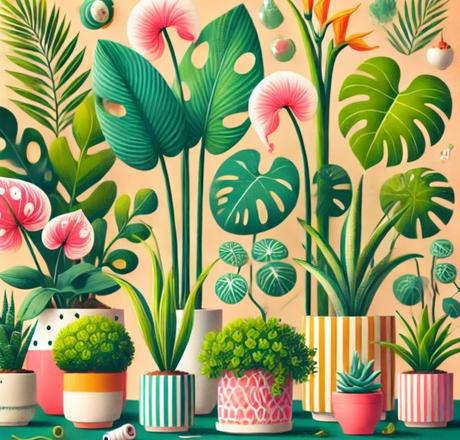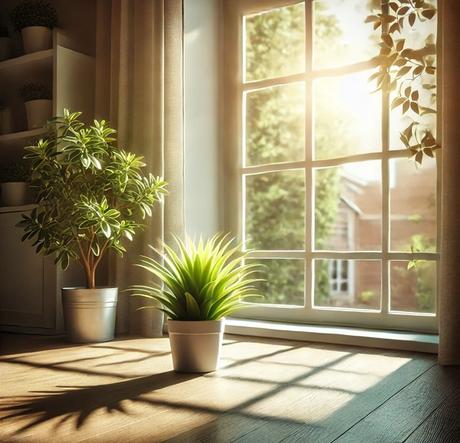
The moment you pick up a plant and put it in your house, you have to remember that it is not just there for decoration. That plant is a member of your household and therefore your responsibility. Despite showing lots of love and care for houseplants, many still end up dying because the owners did one thing or two wrong. Houseplants are some of the easiest pets to keep but you have to know your plant well by understanding its watering, fertilizing and treatment needs for your plant to live up to its purpose of blossoming its beauty in your home. While leaving it for weeks with no water or fertilizer are obvious ways to kill houseplants, these 10 mistakes might still kill your plant.
Overwatering
Plants need water regularly, often once or twice a week if you have potted them in the right container and done your soiling correctly. While the urge to drop a few more drops of water and watch the leaves blossom may be high, overdoing it is not a good idea and you should therefore give it just as much water as it needs and nothing more. Putting too much water or too regularly will drain the soil of essential nutrients. It may also cause clogging which results in food rot and that is a death sentence for your plants.
Neglect
Neglect doesn’t end at leaving the house for a month and not having someone look at the plant. Many people fail to create time for their plants to understand their immediate needs. Sometimes, the leaves may be too dusty causing them to struggle with photosynthesis and aeration. Sometimes, the heat at certain hours of the day is just too much but you don’t notice until you see leaves browning away one morning. You have to be there for your houseplant’s current needs and not just drop some water and head off.
Potting Mistakes
Houseplants grow and outgrow pots as their roots seek more nourishment which is why you can’t have a plant in the same pot forever. The amount of watering required should be your indicator for when to repot your plant. You should re-pot whenever you need to water at least thrice a week to prevent wilting because that will mean that your pot just doesn’t hold enough water anymore. You shouldn’t re-pot too frequently either because that may cause roots to detach from the soil killing your plant. Your new pot should be two to five inches wider than your old pot and ensure that you retain the soil when transferring the plant.
Allowing Them To Freeze In The Winter
Sadly, most houseplants die in the winter as they don’t have enough sunlight and the owners just don’t know what to do about it. Lack of light is not the main killer though. It is the freezing temperatures that finish off the plant. When temperatures fall below 55°F (11°C), your plant may die if it is exposed for long. You should therefore consider moving your plants to a warmer part of your house in the winter. Some plants may require you to cut off all their leaves or provide them with UV light to survive the winter.
Poor Lighting
Poor lighting doesn’t just mean too little light, it also extends to those who expose their houseplants to too much light. When the summer comes and the temperatures soar, you will notice that some houseplants start wilting in the morning hours. You should move them to the side of the house with less exposure to harsh sun rays depending on where you live. You shouldn’t have them hidden in a dim corner either because that will also kill them.

Poor Placement
Decorating the house is your choice, but your houseplants have a say on which side of the house they occupy because it may be a matter of life or death for them. The main concern for the plant of sufficient sunlight, so that window or outside the door may be alright. However, you shouldn’t place it close to appliances that tend to get too hot or a section of your house that exposes the plant to abuse from pets and children. Your potted plant should have enough light, room and space to grow and blossom.
Ignoring Pests and Disease
You really have to understand the signs of danger for your plant by the time you bring it to your house. Many people fertilise their plants with manure made from kitchen waste which may be infected with pests. You should never ignore those beetles or aphids eating at your plant. You also have to cut off leaves and branches that show signs of disease and kill off any infected plants to save the rest. You have to be your own biologist when it comes to pests and diseases that might attack your houseplants.
Overfertilizing
Remembering to buy fertilizer for your houseplants is good because it shows you really do care for them. However, your plants are not too thirsty for that fertilizer, they just need enough of it to help them rejuvenate and keep growing. Too much fertilizer will definitely kill them, so you should read the instructions that come with the fertilizer before applying it.

Poor Drainage
Once you notice water stagnating in your pot 10 hours after watering, you have to get yourself another pot if you are sure that you didn’t overwater the plant. Poor drainage doesn’t just attract pests, it is also one of the surest ways to get rot onto your plants. You should also ensure that your soil isn’t too loose so that the water washes away too quickly before the roots get to absorb it.
Watering With Toxic Water
It is alright to water your plants with tap water as long as you have treated it to reduce salt and chlorine. Treating doesn’t have to mean buying chemicals, you can let the water sleep overnight so that the salt settles at the bottom before using the tap water to water your plants. If you can afford it, then use bottled water to water your plants. You shouldn’t use the water from your kitchen or laundry room though as the harsh soaps and chemicals will kill your plants.

